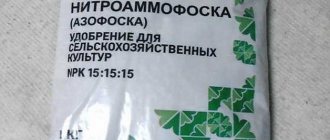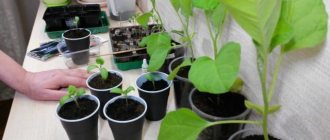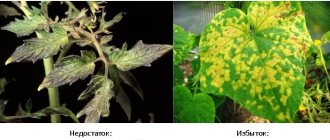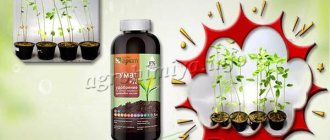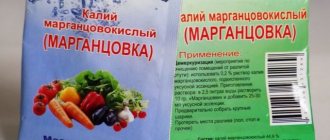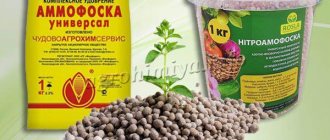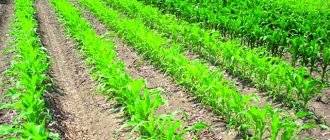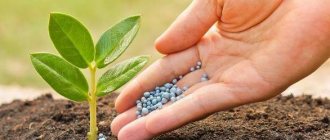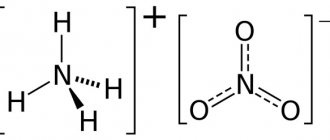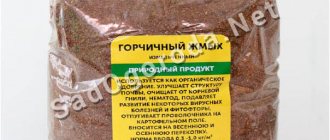The success of a good harvest is painstaking daily work. If you do not care for crops, do not protect them from infectious diseases and pests, and do not feed them in a timely manner, the plants will either grow and develop poorly or die altogether.
Fertilizing plants in a timely manner is one of the requirements for caring for cultivated plants. The modern market offers a large number of different fertilizers, and here it is very important not to make a mistake and choose exactly the fertilizer that is necessary for a particular crop. It is best to use fertilizers of the same brand, but intended for different stages of plant development. The advantages of such fertilizers are that they are all consistent with each other and do not contain mutually exclusive elements. One of these types is fertilizers from the Aquarin line. This series is intended for industrial use in greenhouses.
"Aquarin" - fertilizers for all occasions of plant life
All plants need a full range of nutrients for normal development. But during different periods of growth, the consumption of individual elements changes. If earlier gardeners had to select and mix minerals, now manufacturers have taken care of this. They have developed mixtures designed to feed certain types of plants at different times of the year. Learn more about how to choose the right composition using the example of the range produced under the name “Aquamarine”
Features of Aquarin
Fertilizer Aquarin belongs to the new generation of agrochemicals, because In its production, chelation of active substances is widely used. Chelated fertilizers practically do not produce harmful after-effects for the environment, eliminate the accumulation of nitrates and phosphates in agricultural products and are economical because the loss of active ingredients in chelate form is minimal.
A distinctive feature of Aquarin is its relatively low cost. The price for spring 2021 is approx. 185 rub. for 1 kg. In total, depositing per 1 sq.m. will cost approx. 3.7 rubles, which is comparable to the costs of monofertilizers. Other features are common to chelated fertilizers: fast visible effect and at the same time gentle effect on plants; It is difficult to overfeed them with Aquarin.
Aquarin and Crystalon
Compared to another popular complex fertilizer of the new generation, Kristalon, Aquarin has in common a fairly clear specialization of its lines by types of crops and phases of their development (“colored” and “species” Crystals; “numbered” and “species” Aquarins). But in this regard, Aquarin is more specialized: its species by numbers and cultures are almost not interchangeable. “Numbered” Aquarinas are more focused on areas ranging from several to tens of hectares in the possession of experienced owners. In this case, Aquarin leaves many competitors behind in terms of yield growth. For an example, see Fig. Below are the results of using Aquarin on potatoes. This shows another property in common with Kristalon: the relative increase in green mass is several times less than the production yield. That is, an increase in productivity is achieved by intensifying the crop, which reduces production costs “for tops”.
Types of Aquarin fertilizer, optimized for specific crops, are aimed at owners of small private plots. Perhaps experienced and competent plant growers, but without the financial means to regularly monitor the condition of the soil. In this case, Aquarin will allow you to stabilize yields when weather conditions change, “tighten” them in bad years, and generally increase them from year to year.
The main difference between Aquarin and Kristalon, besides the price, is that the former is used primarily. as an additional fertilizer, while Kristalon is self-sufficient as a plant food. Aquarin’s ideology, so to speak, is this: at the cost of somewhat greater manual labor, reduce the cost of processing and the cost of fertilizers. Technically, this is achieved by the fact that Aquarin’s composition is optimized to intensify plant life. Simply, Aquarin for them is something like an appetizer - an appetite stimulant for people (shrimp cocktail, smoked salmon, etc.) On nutritious soil in a favorable year, spraying or watering with Aquarin will speed up and enhance the absorption of nutrients by plants, but in the opposite case, plants will need to be fed with the missing basic nutrients.
Note: Some sources indicate that Aquarin is exclusively an additional fertilizer. This is not true. Aquarin contains a full range of essential nutrients and can be used independently, and for some crops (see below) it serves as the main fertilizer.
Disadvantages of Aquarin
Nothing comes for free. Therefore, if you choose Aquarina, keep in mind that:
- The volume of manual labor for fertilizing the site and the weekend attendance at the dacha cannot be significantly reduced. The land under the small striped grass does not renew itself; its reclamation is a complex and troublesome task; It is impossible to do without fertilizing with the main fertilizers for crop rotation when using Aquarin in private household plots.
- The distribution of doses and compliance with the regulations for the use of Aquarin need to be more accurate than for analogues. Again in comparison: excessive consumption of smoked and spicy foods can ruin your digestion. A regular, relatively small overdose already in the 2-3rd year will lead to a decrease in the quantity and quality of the crop, and an underdose seriously reduces the effect of fertilizing.
- The waiting period before harvesting after the last treatment with Aquarin for vegetables is long for chelated fertilizers - 30 days.
Note: the chemical reaction of working solutions of all types of Aquarin is moderately or slightly acidic, therefore this drug in tank mixtures is compatible with most pesticides and other fertilizers.
Brief characteristics of fertilizers
Experts have developed different fertilizer compositions intended for specific crops.
This makes it easier for gardeners to select and use fertilizers. For more than 20 years, the Buysky Chemical Plant has been producing mineral fertilizers for feeding all types of plants (see → types of mineral fertilizers).
For convenient use, the drugs are divided by purpose. The following groups of fertilizers are distinguished:
- For vegetable crops;
- For fruit trees and shrubs;
- For decorative deciduous plantings;
- For seedlings;
- For coniferous plants;
- For the lawn.
Now gardeners don’t need to rack their brains about what fertilizers to buy and whether they can be used at the same time. The specialists took care of this in advance. Systems for convenient use of water-soluble drugs have been developed.
All plants, without exception, consume large quantities of nitrogen, phosphorus, and potassium. Therefore, they are called macronutrients.
- Nitrogen is considered a growth stimulant , which affects the regrowth of young stems and leaves. That is why its greatest quantity occurs in spring and early summer.
- Phosphorus is necessary for plant rooting, chlorophyll synthesis, flower formation, and fruit ripening. In this regard, its consumption increases in the spring after the leaves bloom, before flowering, and in the summer when the fruits ripen.
- Potassium is called a plant protector . One of its most important functions is the formation of cell membranes, due to which tissues are strengthened and turgor (plant elasticity) increases. This increases resistance to drought and disease. This element is needed in greatest quantities in mid-summer and autumn to prepare perennial crops for wintering.
A pattern emerges - all three elements are included in complex fertilizers, but their ratio changes seasonally, taking into account the needs of different plants. Many supplements are supplemented with other important substances called microelements. Their ratio is provided in special mixtures with a narrow focus.
Let's take a closer look at each category of fertilizers.
Types of fertilizer
There are 16 types of fertilizers on sale. All of them are designed to improve the development and strengthening of cultures. The main purpose is to strengthen the immune system of vegetable, fruit and berry crops. The differences are in the composition. They are classified as nitrogen-containing, phosphorus and potassium fertilizers.
Need to know! In addition to the standard complex of trace elements (TMC), all types of Aquarin contain sulfur. Therefore, when growing crops that respond well to the component (all root crops), the following substrates should be used: Color, Aquarin Super or Junior.
In addition to the numbered list of the series, there are common fertilizer mixtures:
- fruit and berry and strawberry;
- lawn and flower;
- potato and vegetable Aquarin.
Representatives of "Aquarin" for vegetable and berry plants
This group includes drugs that can be used for all types of vegetable gardens and crops. A system has been developed that provides adequate nutrition for plants.
Recommendations for the selection and use of products:
| Fertilizer name | Compound (%) | Application | Dosage |
| Aquarin "Vegetable" | N – 19 P2O5 – 6 K2O – 20 MgO – 1.5 S – 1.4 Microelements Humic compounds – 10 | From spring to September for root and foliar feeding. Also for seedlings after establishment in open ground. Suitable for all vegetable crops and ornamental plants. Apply at intervals of 7–10 days. | – In open ground 5 – 10 l/m2. |
| Aquarin “Potato” | N – 12 P2O5 – 12 K2O – 35 MgO – 1 S – 0.7 Microelements – iron, zinc, copper, molybdenum | During growth it is used for root and foliar feeding. 5 – 6 times from May to August: – 1 – 2 times before hilling; - before flowering begins; - at the end of flowering. | – 20-30 g/10 l of water before hilling the bushes |
| Aquarin "Strawberry" | N – 20 P2O5 – 5 K2O – 10 MgO – 1.5 S – 8.4 Microelements | Intended for feeding garden strawberries (strawberries). Apply from April to September. | – 20-25 g per 10 liters of water – the first spring feeding to stimulate leaf growth; – 10-20 g per 10 l. The volume is designed for an area of 10 m2. The second session is carried out before flowering begins. |
Also, “Aquarin” offers fertilizers with a narrow focus. We bring to your attention the most popular assortment for the garden.
Instructions for use of Aquarin
We recommend reading our other articles
- How to deal with aphids on cucumbers
- Cologne festive
- Complex mineral fertilizers
- Secrets of July sowing of cucumbers
Different types of the drug Aquarin have a specific effect and dosage, and features of use. The instructions for use, which are available on the packaging of each type of fertilizer, allow you to determine how to dilute the drug and how to use it correctly.
When using Aquarin fertilizer, certain rules must be followed.
Photo of Aquarin potato fertilizer
- When mixing the solution, you must wear protective gloves, goggles and a respirator.
- The product is used only in calm weather, in the morning or evening.
- You should not consume food, water, or smoke while working with the fertilizer so that the drug does not enter the esophagus.
- Aquarin is not dangerous for humans, however, if the product gets on the skin, you should wash it off with plenty of water.
- If fertilizer gets into the esophagus, you need to drink more water, 3-4 tablets of activated carbon. At the first signs of poisoning, you should go to the hospital.
The drug is available in packages of different sizes, which is very convenient. To treat the area, you can choose a suitable package or buy a large pack at once to use the fertilizer for several years in a row. Aquarin is compatible with most types of fertilizers and pesticides.
Interesting!
Aquarin is a new generation fertilizer. The drug improves the absorption of nutrients, plant growth, and activates the immune system.
Nutrients for vegetable crops
Aquarin “Vegetable” is a fertilizer for all garden crops.
Each plant consumes a certain set of substances. This feature is taken into account by specialists when preparing fertilizers for each type of garden crops.
For potatoes – Aquarin “Potato”
Complex water-soluble fertilizer for soil and foliar feeding. The composition includes a set of macro- and microelements necessary for the culture, as well as humic compounds. It dissolves well in water and is completely ready for use . Its use guarantees complete safety for humans due to the fact that there is no accumulation of harmful substances in the soil and in plant tissues, provided that the application rate is observed.
Fertilizer is sold in a polyethylene bucket of 0.5 kg or 1 kg. For soil fertilizing, use a working solution in a ratio of 20 g per 10 liters of water. To spray leaves, it is diluted three times.
For nightshade crops
Aquarin "Potato" can be used not only to feed the crop of the same name, but also other root crops - beets, carrots, celery, turnips.
Aquarin "Vegetable" is used to care for crops in open ground. The product is part of the nutritional system for tomatoes, peppers, and eggplants. Before using water-soluble fertilizer, the soil is prepared for planting using OMU fertilizer “For tomatoes, eggplants, peppers.”
It is used in this order:
- At the end of winter, beginning of spring, it is added to the plant substrate for sowing seedlings;
- In April, it is added to the garden soil before planting crops;
- Subsequent feeding after complete survival of seedlings, with a frequency of 15 - 20 days, from May to August.
Typically the following dosages are followed:
| Purpose | Norm |
| For seedlings | – 10 g per 1 liter of plant substrate.e |
| Simultaneously with planting in open ground | – 50 g/m2 for continuous digging; – 20 g per well. |
| Current feeding | 20 – 30 g/m2 between rows |
For melon vegetables
Aquarin “Vegetable” will bring more benefits if it is alternated with the organic-mineral fertilizer OMU “For Cucumbers, Pumpkins, Zucchini, Squashes”, which provides crops with the necessary set of nutrients for them. It includes:
| N – nitrogen | 7% |
| P2O5 – phosphorus | 10% |
| K2O – potassium | 5% |
| MgO – magnesium | 0,5% |
| S – sulfur | 1,6% |
| Microelements | 0,73% |
| Humic compounds | 11% |
Fertilizer is applied before sowing seeds, 20 g in each hole for one grain. After the seedlings take root, another 2–3 feedings are carried out at intervals of 20–30 days. For each linear meter of row spacing, 10–30 g of fertilizer is applied.
For cabbage and greens
Under the brand name "Aquarin" "Vegetable", can be used for leaf crops:
- All types of cabbage - white, red, cauliflower, broccoli, kohlrabi, Brussels sprouts;
- Spinach;
- Sorrel;
- Dill, parsley, basil, coriander, etc.
For strawberries
As with all fertilizers from the Aquarin group, Strawberry fertilizer contains nutrients in chelated form, that is, they are highly soluble in water and available to plants. When applied in spring, it promotes the growth of young leaves and flower buds. Repeated feeding is carried out after flowering until the berries form.
Tip #1: Pay attention! During flowering, root and foliar feeding of strawberries is not carried out. During this period, only abundant watering is necessary.
Aquarin "Strawberry" is used as a fertilizer for all types of garden strawberries.
Summer application of “Aquarin “Strawberry” is necessary after harvesting, when the strawberries form tendrils for propagation.
Final fertilizing is needed in the fall to strengthen the bushes for wintering.
This is the required minimum; the use of fertilizer can be added to the fertilizing in addition to the specified periods if the crop does not develop well enough.
Composition and principle of operation of Aquarin fertilizer
In traditional mineral fertilizers, the active components are presented in the form of ordinary salts, of which only a third of the macroelement is absorbed by plants. Thanks to their semi-organic form, chelates help crops absorb nutrients in larger doses. The compound does not accumulate in the soil, but is broken down into useful or neutral components.
In the Aquarin series, the fertilizers contain the optimal amount of micro- and macroelements in chelated form. Due to this, a quick, visible result is achieved. The use of agricultural products contributes to:
- soil enrichment;
- increasing the yield by a quarter;
- improving the taste of berry and vegetable crops, ornamental crops - flower crops;
- long-term preservation of fruits;
- increasing plant resistance to infections and unfavorable environmental factors.
Complex fertilizers are a mixture of water-soluble powders and granules. The color of the fertilizer varies from white to green. Aquarin is produced in different compositions, which can be divided into two lines:
- species - for use in summer cottages, packaging: bags of 20 and 100 g, plastic buckets of 0.5 and 1 kg;
- numbered - for agricultural land, packaging: bags of 10 and 20 kg.
Aquarin for the orchard
The fertilizer is intended for feeding fruit trees, berry bushes, and grapes. The complex of nutrients is selected to provide woody plants with the necessary elements.
| N – nitrogen | 12% |
| P2O5 – phosphorus | 12% |
| K2O – potassium | 35% |
| MgO – magnesium | 1% |
| S – sulfur | 0,7% |
| Microelements | 0,73% |
For feeding, prepare a working solution of 25 g per 10 liters of water. This volume is enough for 10 square meters of soil.
Important! For nutritious spraying of tree crowns, the concentration of the product is 3 times less than that of the soil solution.
From May to September, approximately 5 feedings are carried out, but no later than two weeks before harvest.
Another popular fertilizer is Aquarin “Fruit and Berry”, used from May to September. For feeding, prepare a working solution - 20 g per 10 liters of water.
It is recommended to use it at the following consumption rate:
| Berry bushes | Fruit trees | Raspberries and grapes |
| 1.5 – 2 liters per 10 m2 – for foliar feeding, 1 – 3 times throughout the entire growing season, from flowering to fruit ripening. Recommended intervals between sessions are 10 – 15 days. | To feed the crown at least once after flowering until the ovary forms. Maximum three times after flowering until fully ripe. | 10 – 20 liters per bush, 1 – 3 times after flowering. |
| Note: For these plants, the concentration of the working solution increases - 30 g per 10 liters of water. | ||
Numbered Aquarins
Aquarin fertilizers for continuous plantings on areas of several hectares are the same as those oriented towards crops and Crystallines, marked with colors; This is a generally accepted system for designating types of complex fertilizers from one line. But, since this series of Aquarins is intended for professional use, the types from it are usually distinguished by numbers. The use of numbered Aquarins is advisable in fields of 3-5 hectares, because the compositions are produced in the form of water-dispersed granules (WDG) in 20 kg packages, and the drug in opened packaging is stored for one season. Numbered Aquarins are applied over damp, thawed soil by embedding into the soil to a depth of 7-10 cm, over bare soil heated from above and dried by sprinkling with a 0.1%-0.3% solution according to the instructions for this type of fertilizer for a given crop, and on greenery - by spraying with the same solution.
The chemical composition of numbered Aquarins is given in Table. below. The first thing that catches your eye is that there are no trace elements. There are the main NPK and mesoelements Mg and S. The reason is that on sufficiently large areas, plant starvation for microelements is detected in spots and is replenished by selective processing within the planting. That is, again, Aquarin’s idea is being implemented: at the cost of some reduction in labor savings, reduce the cost of fertilizers and increase the profitability of the farm as a whole. The second feature is the specialization of compositions both according to the phases of plant development and according to growing conditions. This leads to the application features.
Chemical composition of Aquarin fertilizers for continuous plantations
Potato
Numbered Aquarin fertilizers are applied to potatoes. way:
- For early varieties - on soil soaked with melt water Aquarin-13. The application rate on light soils is 3 kg/ha: on medium and heavy soils 2 kg/ha.
- At the beginning of budding - Aquarin-5 5 kg/ha.
- Upon completion of flowering, Aquarin-12 2 kg/ha on light soils and 1.5 kg/ha on medium and heavy soils.
Roots
For sugar and fodder beets, one feeding is carried out at the beginning of the formation of root crops. Application rate 2 kg/ha. According to the degree of increase in soil density from loose sandy loam to dense loam, the fertilizer number is selected: Aquarin 2, 3, 4 or 12. It is advisable to feed plantings of table root crops on any soil according to the same scheme only with Aquarin-12, because in case of excess sulfur, the commercial quality of the crop will deteriorate.
Cabbage
Two feedings are carried out with Aquarin-5 at a rate of 2 kg/ha. The first with a rosette of 5-6 leaves; the second at the beginning of head formation.
Fruit
Foliar treatments by sprinkling tree trunk strips with a 1.5% solution of Aquarin-5 at intervals of 2-4 weeks. Multiplicity up to 4 per season depending on the condition of the plants:
- during the period from the complete unfolding of the leaves to the beginning of the blossoming of the buds (green cone stage);
- at the beginning of the formation of ovaries;
- before fruit filling begins;
- at the beginning of fruit coloring.
Grape
When signs of magnesium chlorosis appear, spray with a 0.5% solution of Aquarin-5 at a rate of 15-20 liters per 100 square meters. m of assimilating surface. If cure does not occur, after 1-2 weeks treatment is carried out with a 0.1% Aquamix solution at the same rate.
Expert opinion on fertilizing fruit trees, berry bushes and grapes
Aquarin “Fruit and Berry” can be used to feed flowering ornamental trees and shrubs.
“Excessively frequent use of fertilizers harms plants. Too much of a nutrient is just as dangerous as too little. It is better to carry out a minimum amount of planned fertilizing. The decision on the need for additional sessions is made depending on the individual condition of the plant. If a tree, shrub and vine grow, bloom and bear fruit normally, then extra feeding is not needed.”
L. I. Ivashchenko is the owner of a nursery of fruit and ornamental crops.
Aquarin's analogues
The Kristalon series of fertilizers is comparable in the specialized lines produced by development phases and types of crops. The differences are the price and the fact that Kristalon complexes are used exclusively on their own, while Aquarin agrotours often act as additional feeding.
Innovative fertilizers from the Aquarin series are better absorbed by plants. Owners of household plots note the possibility of choosing a specialized complex for various crops, as well as the positive impact of their use in increasing the yield and taste of fruits.
Serious mistakes gardeners make when using Aquarin fertilizers
- Excessively frequent fertilizing.
Easily soluble compounds give a quick effect. This encourages some gardeners to use it as often as possible. Don't get carried away with nutritional products. If there are more of them than needed, they accumulate in the fruits in the form of harmful substances.
- Application of foliar fertilizers during flowering of fruit trees and shrubs.
During this period, plants are especially vulnerable. Even a weak solution can lead to burns of the petals, as a result of which the ovary is poorly formed, in the worst case there will be no ovary at all.
Foliar feeding of the crown is carried out after the complete end of flowering, but also before the formation of the ovary. Subsequent spraying is planned during the fruit ripening period, but no later than three weeks before harvest.
Advantages and disadvantages of Aquarin
Advantages
- It increases the absorption of nutrients by plants several times, thereby accelerating the growth of crops and their resistance to infections and negative environmental factors.
- Increases the keeping quality of fruits and root crops and their taste.
- The compounds that make up mineral complexes do not accumulate in the soil. They decompose into neutral or useful substances.
- Compatible with most pesticides and organic fertilizers.
- Convenient to use, easy to dissolve in water. Economical.
- Two lines of agricultural products have been developed for household plots and rural farms.
Flaws
- In unfavorable years, additional basic fertilizing is required.
- Long waiting period, last treatment is carried out 1 month before harvesting.
- The use of agricultural products is possible for no longer than 3 years, otherwise addiction may occur.
Category: “Questions and answers”
Question number 1 . Is there such an “Aquarin” that is suitable for all plants?
Answer . This fertilizer is called Aquarin “Universal”. It contains an equal amount of macroelements - nitrogen, phosphorus, potassium, 18% each.
Fertilizing is recommended for all types of garden and ornamental crops. Used for soil irrigation 20 - 25 g per 10 liters of water. For foliar feeding, the same amount of fertilizer is diluted in 30 liters of water.
Question No. 2. Is it necessary to water the garden before applying the Aquarin fertilizer?
Answer . Depends on the concentration of the working solution. Concentrated liquid is used after watering; a weak solution can be applied to dry soil. In this case, the irrigation session is replaced.
Compatibility of Aquarin with other drugs and fertilizers
Working solutions of Aquarin series complexes have a slightly acidic or moderately acidic chemical reaction. Thanks to this, agricultural fertilizers are well compatible with many fertilizers and pesticides.
Aquarin fertilizers are often used together with organomineral complexes as a corrective fertilizer. Under favorable weather conditions, treatments with Aquarin accelerate the absorption of nutrients by crops, however, otherwise the plants need additional nutrition with the missing macro- and microelements.
Advantages of Aquarin
The “Aquarin” additive has many advantages with which it conquers gardeners. For example, it is non-toxic, since the composition does not contain harmful impurities.
The product also supplements the plant with the substances and microelements it needs, especially at the time of vigorous growth. Fertilizing prevents the development of diseases that are caused by a lack of nutrients, and also increases the crop’s resistance to any weather conditions and parasites.
“Aquarin” enhances the effects of soil fertilizing and helps the main microelements flow from the soil into the plant through the roots. And most importantly, this additive economically solves the problem of plant nutrition.
Aquarin Floral
Aquarin Flower is suitable for both root and foliar feeding. Suitable for indoor, garden, decorative, balcony flowers. Provides health as well as rich color.
Read also: Eurolighting (herbicide) - instructions for use, reviews, composition
Instructions for use:
- For floral and decorative foliage flowers grown indoors. The recommended frequency of fertilizers from the beginning of spring to the end of autumn is once every 7-10 days, in winter - once a month. 10-20 grams of the composition should be diluted in 10 liters of water;
- For garden annuals. The procedure is carried out every 10-12 days. 15-20 grams of the product dissolve in 10 liters of water;
- For balcony plants. Conducted once every 10-12 days. The concentration is the same as in the previous version;
- For roses and perennials grown in open ground. The first procedure is performed after wintering. Subsequent times are prescribed every 12-15 days. In both cases, the concentration of the substance is 15-20 grams per 10 liters;
- For bulbous plants. The first fertilization is carried out during active growth of shoots. Subsequent times are scheduled every 10-15 days. In both cases, the concentration of the substance is 15-20 grams per 10 liters. The last fertilizer is scheduled 10 days after flowering. Aquarin concentration is 10-20 grams per 10 liters of water.
Foliar feeding is carried out on cloudy days, in the morning or evening.
Reviews from gardeners and gardeners about Aquarin fertilizer
Reviews from gardeners and gardeners about Aquarin fertilizer are presented below.
- Egor Yasenko : “There are a lot of coniferous crops on our plot. In order for them to grow well, I apply certain fertilizers every year. Last year the choice fell on Aquarin. The drug is economical and dissolves very well in water. I was pleased that the jar of fertilizer had a convenient measuring spoon! The instructions for use are quite clear, there are no particularly serious requirements. I think I will continue to use it, the effect was good.”
- Alexey Martynov : “I have been using Aquarin for several years for various vegetable crops. The product is good, but, unfortunately, the composition indicates that it does not contain calcium. This is a big omission for me, so I mix the product with other drugs or put egg shells in the holes with vegetables (it makes up for the lack of this element). In terms of effectiveness, there are no complaints, plants begin to develop much better after fertilizing, they get sick much less often, and begin to respond more easily to drought.”
- Valentina Lonchuk : “In comparison with such fertilizers as “Athlete”, “Bud”, the drug Aquarin shows greater efficiency. It really enhances plant growth, does not spoil the soil (at least, it seems to me), and also increases plant resistance. Productivity has increased by about 1.5 times since it began to be used for fruit crops. And the plum, which previously produced very few fruits, and even wormy, small ones, over the last 2 years has pleased us with large cream of commercial quality! The main thing is to use the drug according to the instructions so that there is no harm to the plants.”
Varieties of Aquarina
Aquarin fertilizer is available in different types. They differ in purpose (for certain crops or purposes), composition and application.
- "Aquarin for seedlings" is used from February to June. This is a preparation for seedlings of any cultivated plants. Fertilizing is carried out by root or leaf. The product is diluted in an amount of 10-20 g/10 l of water. Apply once every 1-2 weeks before and after planting in the ground (before flowering).
- “For fruiting” is a fertilizer that increases crop yields. Diluted in an amount of 25 g/10 l of water. Up to 5 feedings are done per year. Moreover, the latter is needed no later than 2 weeks before harvest.
Photo of Aquarin fertilizer for flowering
Photo of fertilizer Aquarin universal
- “Strawberry” is suitable for use from mid-spring to early autumn. Recommended for feeding strawberries and wild strawberries. In early spring, a foliage growth solution (20-25 g/10 l of water) is applied under the roots. At the beginning of flowering, a less concentrated composition for foliar feeding is made (10-20 g/10 l of water). After harvesting, you can apply this type of leaf feeding again.
- “Flower Aquarin” is a preparation for root or foliar feeding of potted, flowerbed, balcony, and garden ornamental crops. Used up to 5 times per season. Can be used throughout the year. The dosage of the drug depends on the type of crop.
- "Lawn Aquarin " is necessary from April to September. Diluted in an amount of 20-25 g / 10 l of water. Per square meter you need 4-10 liters of this composition for root feeding. Apply the drug after each grass mowing or once every 15 days for crops that are not cut.
- "Coniferous Aquarin" is used for a wide variety of types of coniferous plants. 20-30 g of fertilizer are dissolved in 10 liters of water. The solution consumption is 4-5 liters per young plant or 10-30 liters per adult crop. It is applied by the root method throughout the growing season with a break of 15-20 days. The last feeding should occur at the beginning of September.
Photo of Aquarin vegetable fertilizer
Aquarinas for different crops
Taking into account the diversity of plants and their characteristics, manufacturers have developed products with different quantitative compositions of micro- and macroelements, including:
Each crop produces its own fertilizer, the use of which gives positive results. The package indicates its number, name, weight. There is also the name of an agent that is active only on soils with a certain acidity. Let's look at the instructions for using the Aquarin fertilizer for different plants.
Potato
The bushes begin to be fed for the first time after they reach a height of 10-15 cm. The second treatment is carried out during the formation of buds, the third after flowering. The fertilizer application rate is 300-500 grams per hundred square meters.
Aquarin for seedlings
The purpose of using the drug is root and leaf treatment. This promotes active growth, accelerated flowering and fruiting, increased resistance to diseases and adverse conditions. To prepare the solution, you need to dilute 20 g of the drug in 10 liters of water. Initial watering should be carried out after the first shoots appear, then spray the plant every 10 days.
To obtain a good harvest, use the “Aquarin vegetable” fertilizer. Here you need to add nutrients by watering. The solution is prepared based on 10 liters of water.
- Eggplants, tomatoes and peppers. The first feeding is carried out after the formation of a developed root system. After the fruits appear, feeding is carried out every week. Fertilizer "Aquarin 5" is taken in an amount of 15 g.
- Cucumbers. The solution is prepared at the rate of 10 g of the drug when the plant has 5-6 leaves. At the fruiting stage, repeated watering is carried out at intervals of 7-10 days, the dosage is increased to 25 g.
- Garlic and onion. Fertilizing is carried out by watering. For preparation you will need 25 g of fertilizer.
- Pumpkin. After the emergence of seedlings, they are treated by root watering for 7 days. A solution is prepared using 20 g of the substance.
Article on the topic: WMD Khvoynoye - reviews, description
Aquarin Super
The drug is intended for all crops. Used for root feeding. Packaged in 25 gram bags. Each batch contains 200 bags. The cooking method is indicated on the package.
Fruit and berry
Used for better fruiting. Used for root feeding and bush treatment. Improves the taste and appearance of fruits. Aimed at preventing diseases and improving resistance to adverse conditions.
Strawberry
“Aquarin strawberry” is used to fertilize garden berries. Its goal is to increase resistance to diseases, pests and the effects of bad weather conditions. Apply 3 times per season. The first feeding of fruit and berry crops takes place immediately after the snow melts. This is done by sprinkling. The solution is prepared from 25 g of product and 10 liters of water. The second time - after the buds begin to appear. The composition is made at the rate of 15 g per 10 liters. The third feeding of strawberries and wild strawberries is carried out after the end of fruiting. The berries grow large and sweet.
Aquarin for the inedible
Fertilizer for flowers is suitable for all types - both indoors and those growing in open ground. It is used in the form of solutions obtained in a ratio of 10 g per 10 liters of water. For this you need “Aquarin Floral”. The first watering occurs when shoots appear. Several treatments are carried out during the growing season. The composition promotes the formation of green leaves and strong stems, abundant flowering. Indoor flowers are watered with the solution once a month.
To create a thick grass surface, a special composition “Aquarin Lawn” has been developed. Fertilizer allows you to grow a grass covering that will have such properties as uniform growth, color, and grass stand. It is necessary to fertilize using the sprinkling method. According to the instructions, each application of the drug is carried out after the lawn has been mowed. Take 25 g of Aquarin and 10 liters of water. The resulting mixture is used to water an area of 10 square meters. m. As the grass grows, cutting and processing are done again.
For feeding coniferous and ornamental seedlings. The purpose of the composition is to prevent browning of the needles and give the crown a rich green color. Foliar feeding is carried out at least four times during the growing season. The solution is prepared by taking 15 g of the drug per 10 liters of water.
Aquarin Strawberry
Aquarin Strawberry is used to saturate strawberries with essential microelements. Its impact:
- Increased productivity;
- Improving fruit quality;
- Increasing resistance to diseases;
- Increased resistance to adverse external influences.
To carry out the procedure, you need to dissolve the composition in water. The concentration of the active substance depends on the time of use:
- First time (root method). Held in the first months of spring. Necessary for the correct formation of the leaf system. For 25 grams of composition you will need 10 liters of water;
- Second time (non-root method). It is carried out using a sprayer. The procedure should be planned for the beginning of flowering. It will increase the productivity of plantings and increase the quality of berries. 20 grams dissolves in a liter of water per 10 square meters;
- Third time (non-root method). For the procedure you will need a sprayer. It is planned after picking the berries. Required to improve the quality of the next harvest, stimulating the growth of new shoots and sprouts. Used in the same concentration as in the previous version.
The procedure is recommended to be carried out on cloudy days. The ideal time for this is early morning or late evening.
